Some people may say that initial failure makes eventual success much more satisfying. In my case, at this late stage in the severely disrupted World2 Tour I have neither the patience, nor money, to deal with many more such occurrences during the remaining time of the Tour, and quick successes are much more to my liking. Of course, circumstances beyond one’s control frequently intervene and, more importantly, the birds continue to have minds of their own. As I have already mentioned, when I failed to reach Ghana, thanks to their Byzantine visa application process, I needed to find a replacement destination on short notice, and the most important criterion in that search was that the new location possesses a similarly enticing list of resident birds relative to that other, prohibited, country. Fortunately, Sierra Leone fit the bill nicely, with most of the same species, plus a few others that are not possible in Ghana. Additionally, all of those are found around a country with a smaller geographic footprint, meaning that cycling between the best birding sites would be slightly faster.
For my visit I planned on making my best birding efforts at four of those sites: Western Area National Park, just south of Freetown, Tiwai Island Wildlife Sanctuary, amidst the Moa River, Gola Forest Central National Park, east of Kenema, and the savanna landscape, north of Makeni. The latter site involved birding while cycling along a minor road, which I did on my own, and at Tiwai and Gola a local villager acted as a guide. At the park near the capital, I was not allowed to enter on my own without a prearranged permit. Fortunately, the man working the guard gate had the contact information for one of the only independent birding guides in the country, Momoh Sesay, and we were able to arrange an outing there for the following day. Momoh knows the birds well, and was also able to provide a lot of helpful information related to traveling and birding around the rest of the country. Additionally, his day job involves work that is very similar to the project I intend to begin once the Tour is complete, so it was a fortuitous introduction for me.
I did have enjoyable visits to those four sites and saw a number of good birds there, though, as usual, I was always hoping for more. Additionally, my photography efforts there, especially in the dark forest locations, left a little to be desired. However, I was able to add a generous number of quality sightings during the cycling portions of my visit, which is always my favorite way to go about the process. So, here are some of the best birds I saw in Sierra Leone, starting with some of the smaller examples, Bar-breasted Firefinch, Black-and-White Mannikin, and White-Browed Forest-Flycatcher.
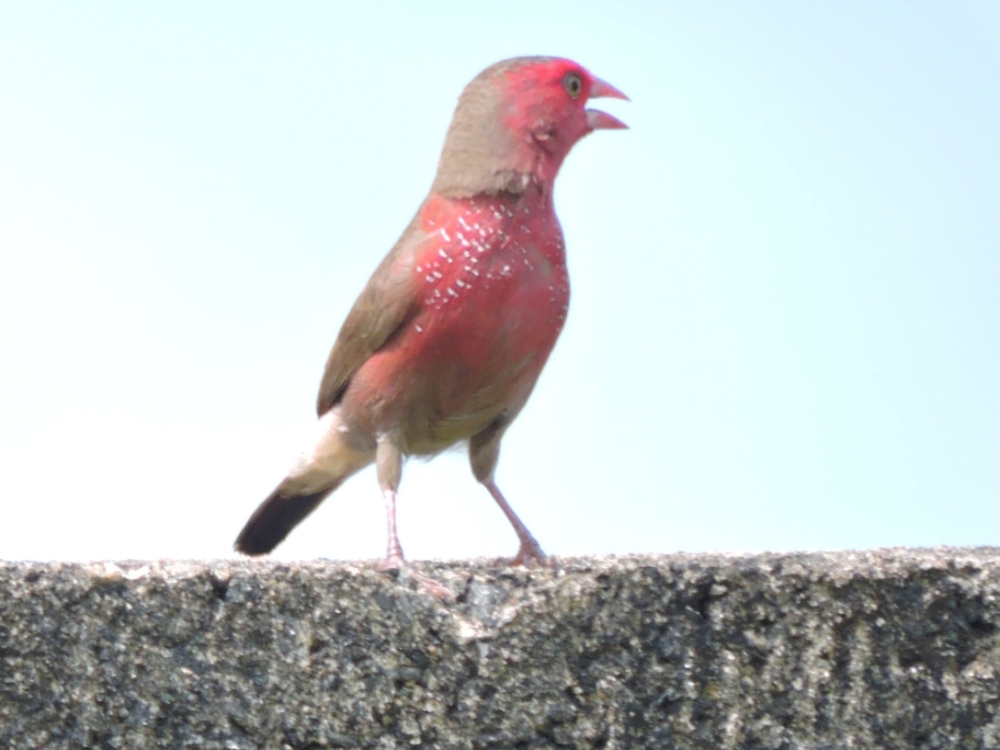
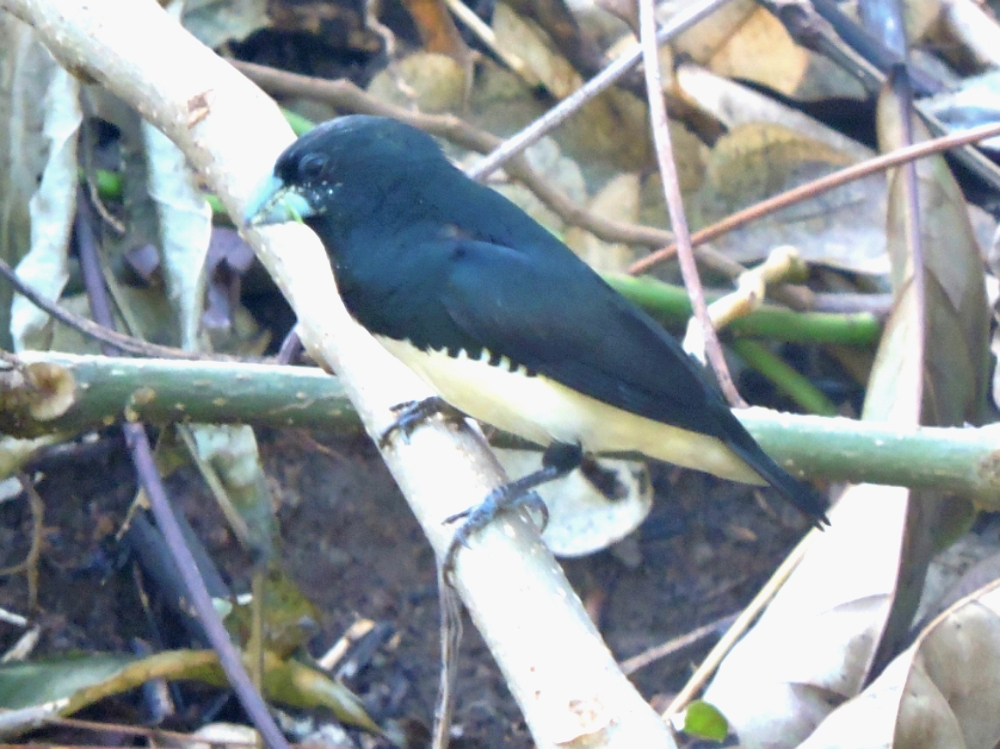
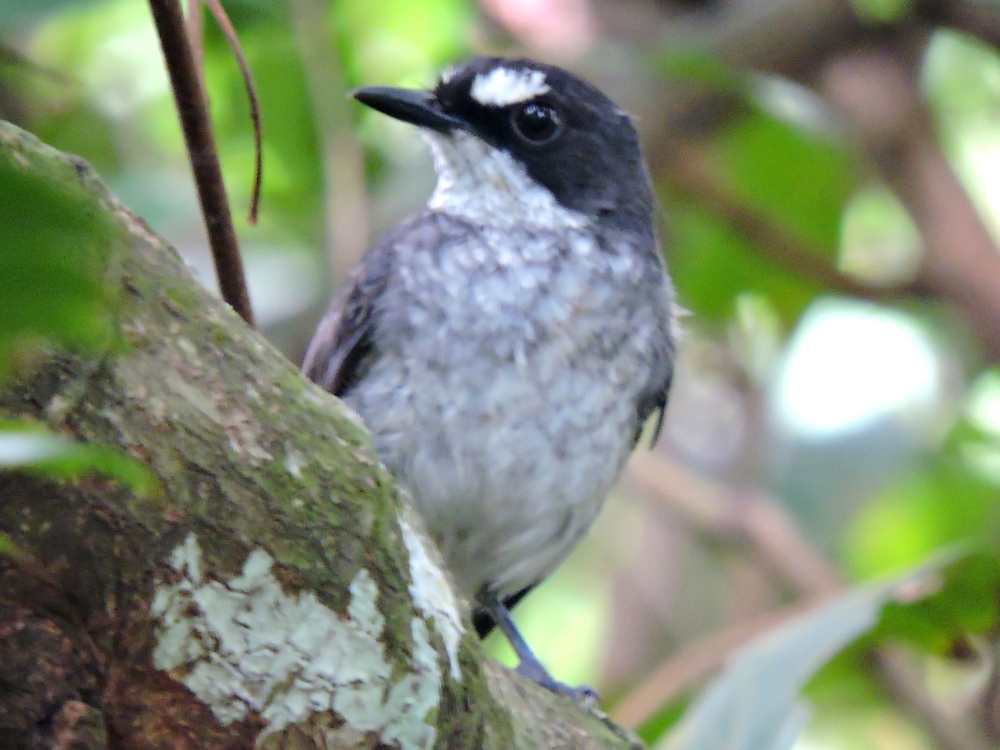
This female Yellow-Casqued Hornbill was making a conspicuous honking
noise with her inflated throat sack (Western Area.)
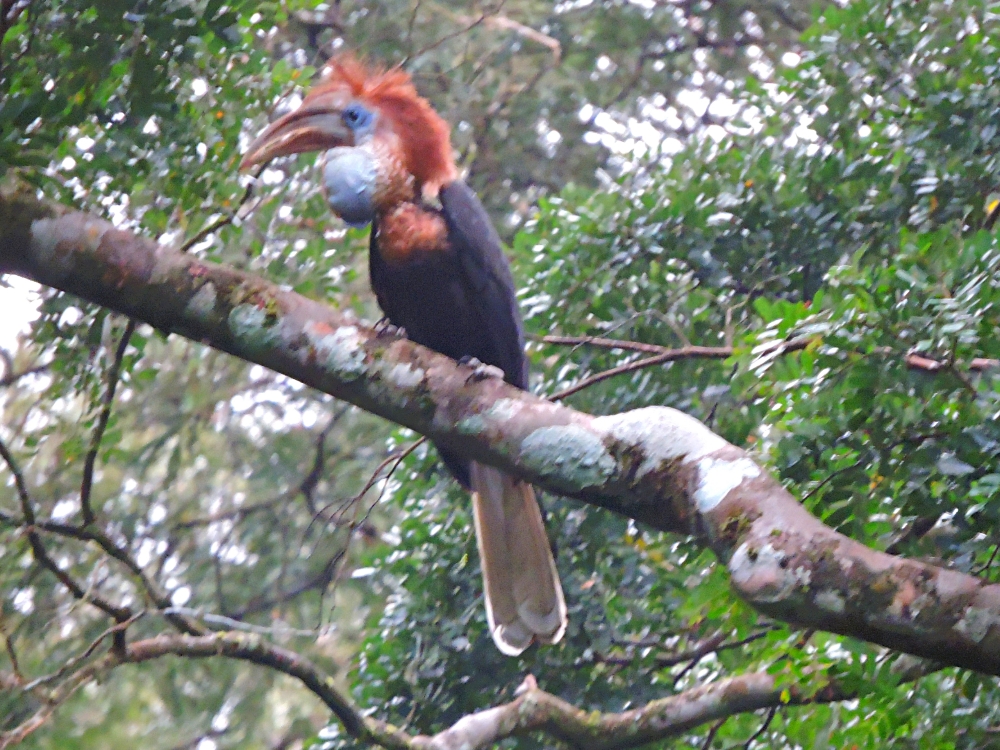
One of the few decent images I obtained at Western Area was Klaas’s Cuckoo.
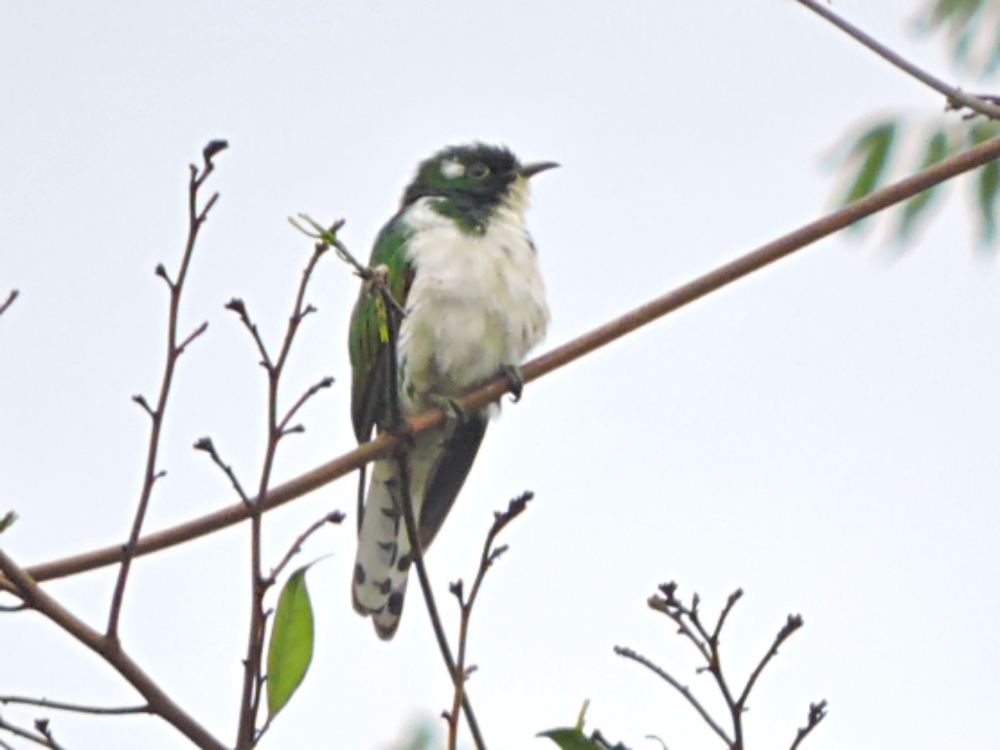
Elsewhere, Vieillot’s Weaver was busy attending to its nest…
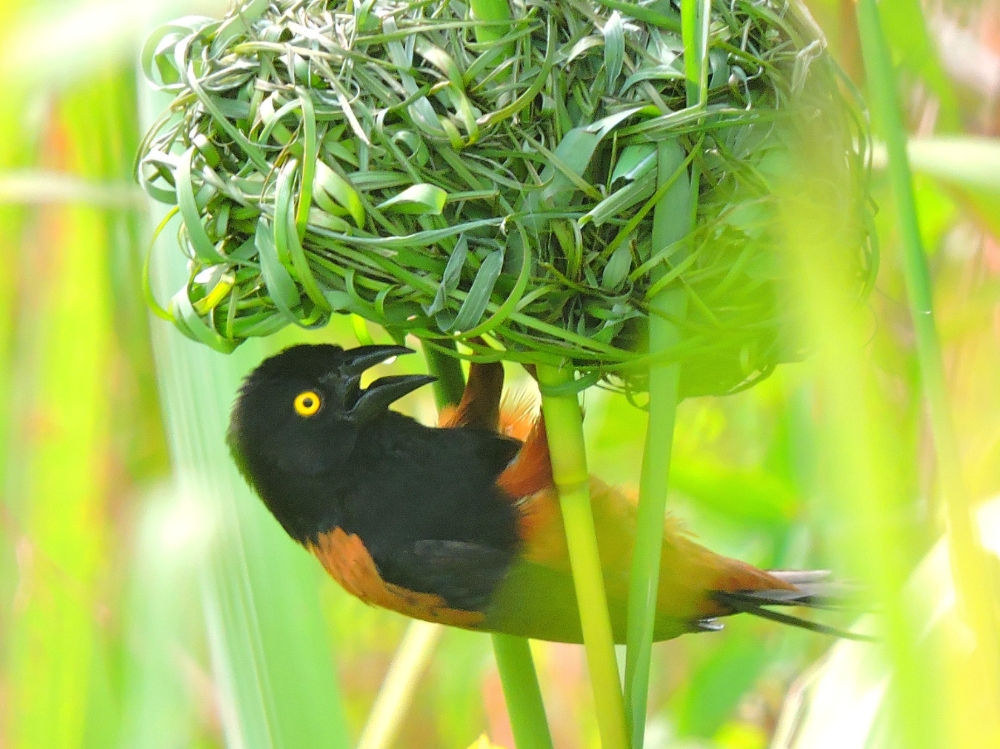
…and Western Reef-Heron gave me one of the few missing herons of my list.
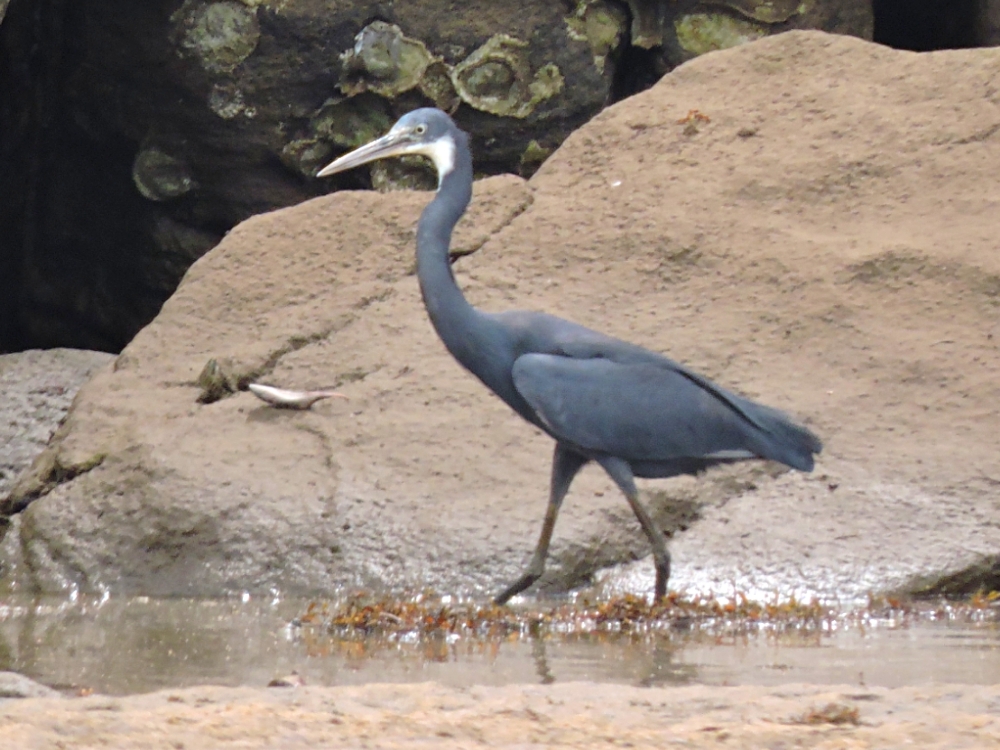
African Gray Woodpecker was one of the first new woodpeckers I have seen in a long time...
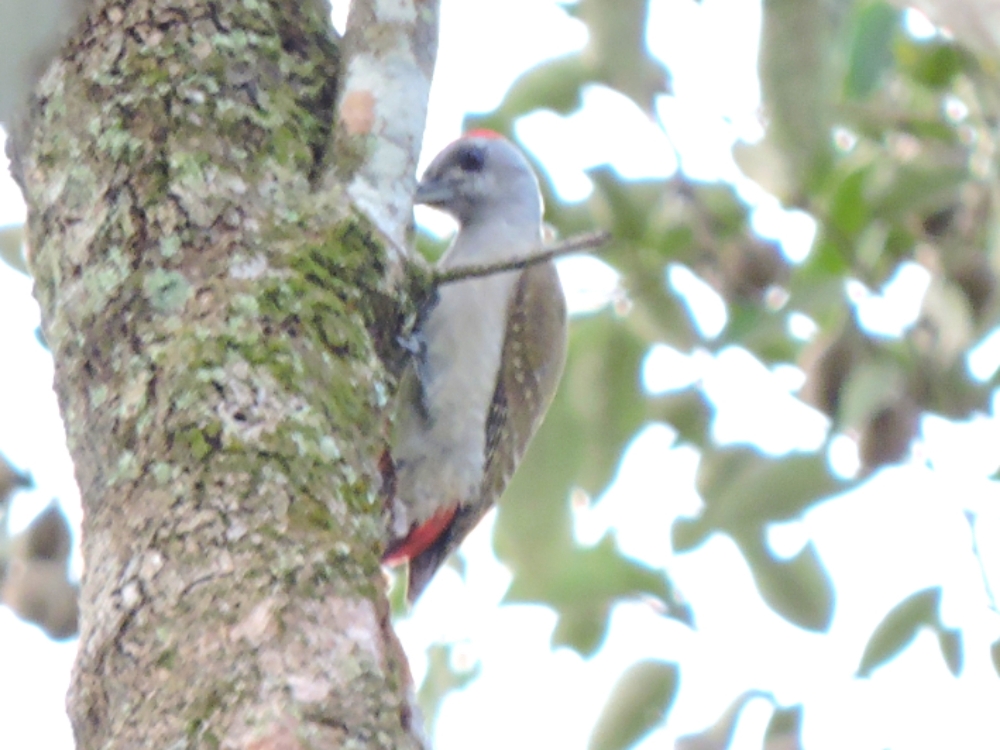
...and Gray-Headed Bushshrike (Makeni savanna) added to a family of which I had few previous sightings.
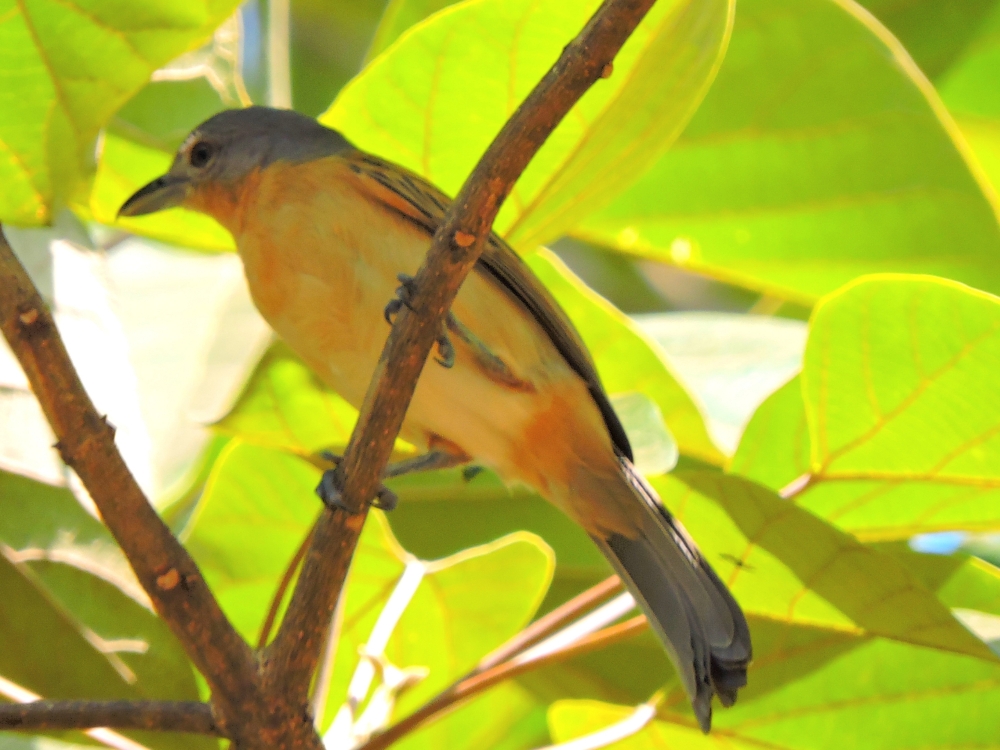
Green Pigeons are often tough to see among the green leaves, so I was pleased to track down African Green-Pigeon feeding in a fruiting tree.
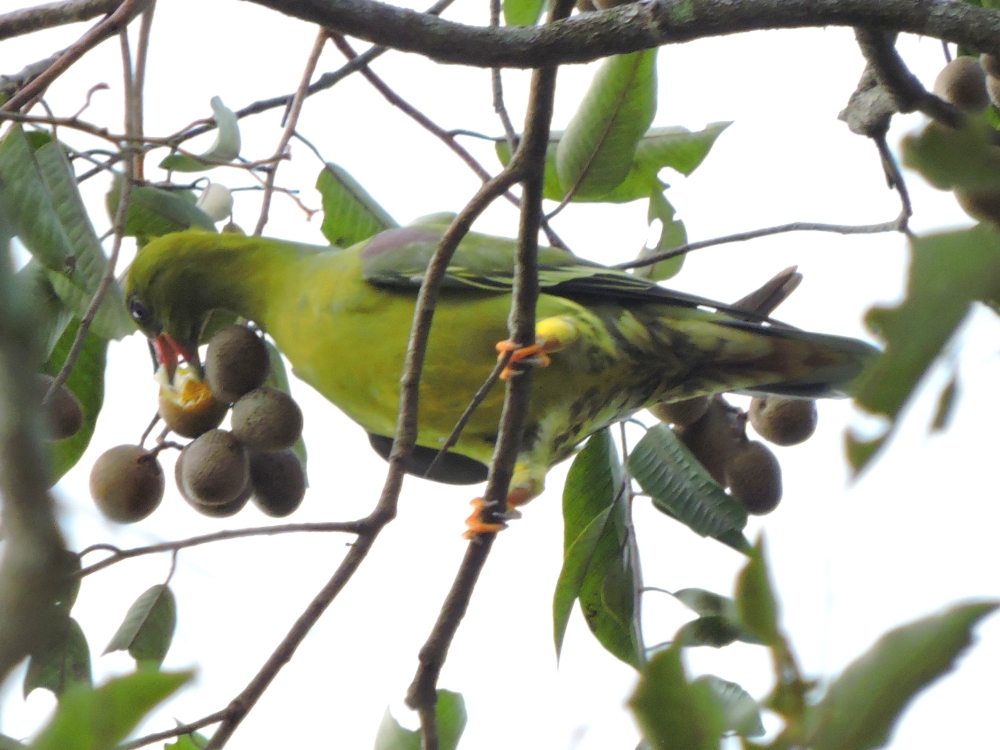
And while I saw Great Blue Turaco more than once in the forests, my best sightings came while cycling.
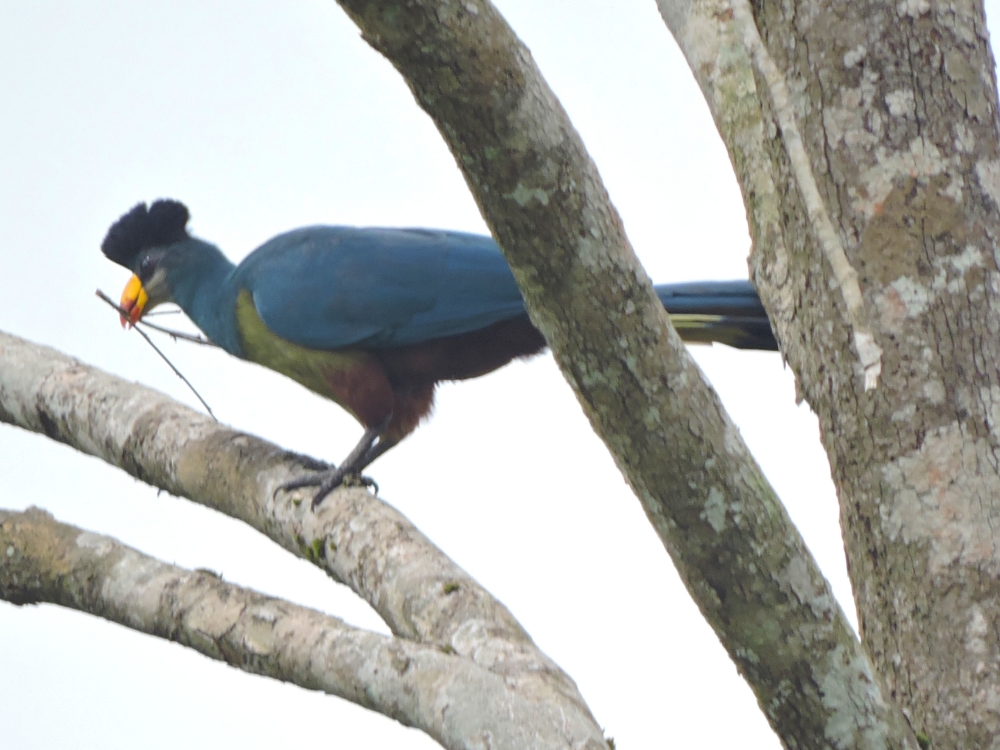
Not being particularly satisfied with my first Pratincole observation in Togo, Rock Pratincole (Tiwai) compensated nicely.
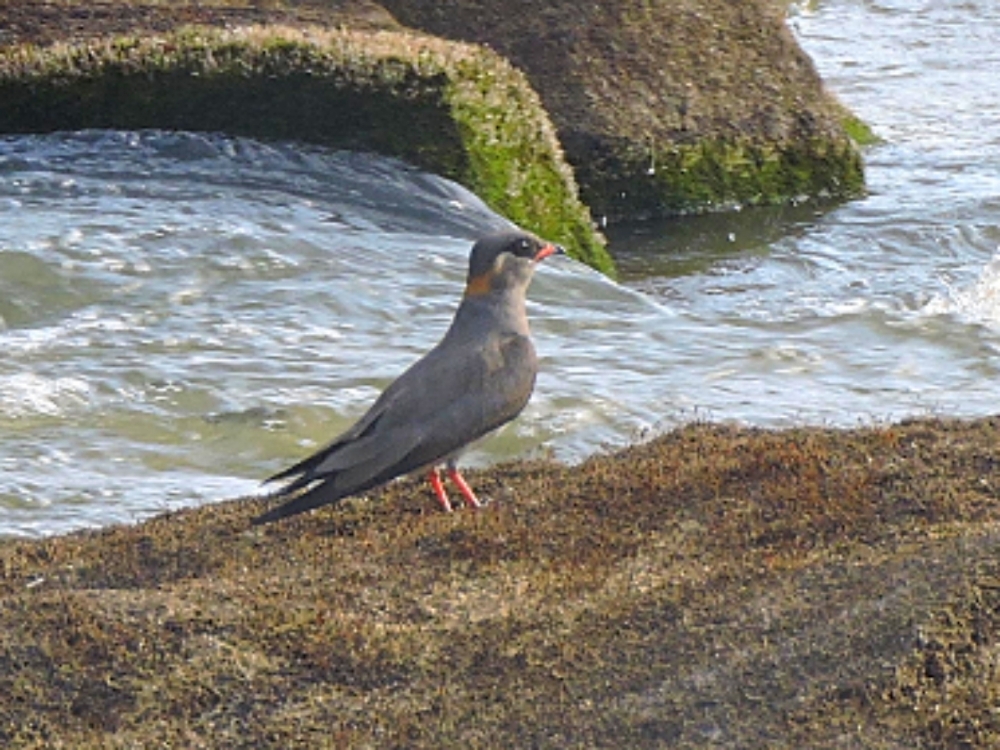
Double-Spurred Francolin can be tough to see, but cycling along dirt roads can often provide sightings of those kinds of species.
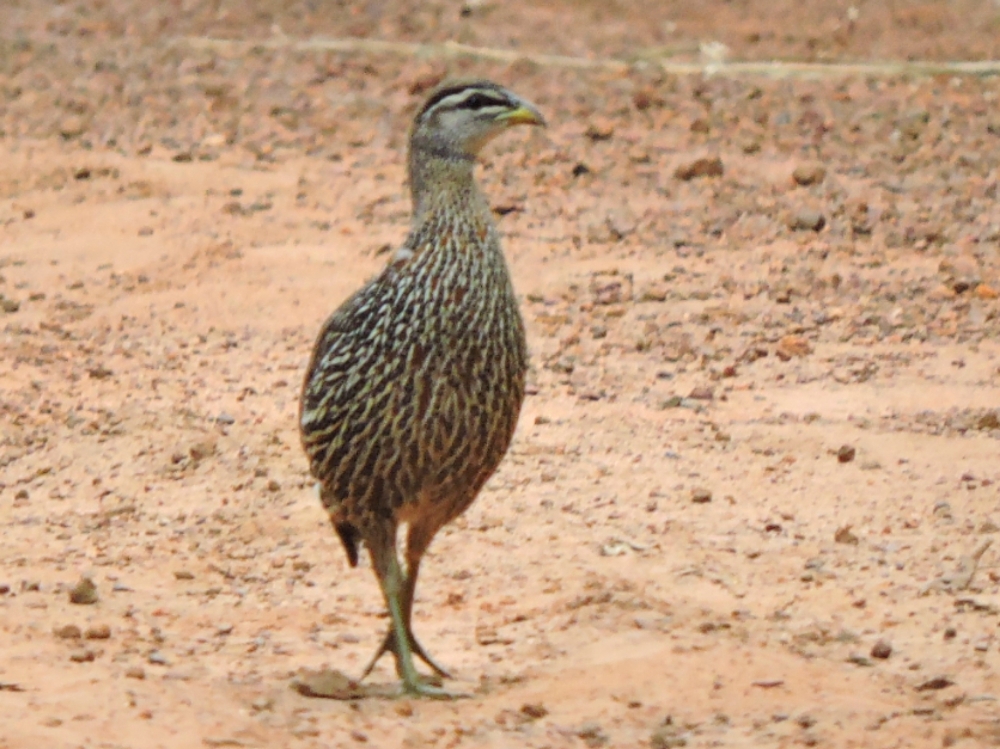
Woolly-Necked Stork was a species that I had hoped to see, but I didn’t expect to see one in a tree.
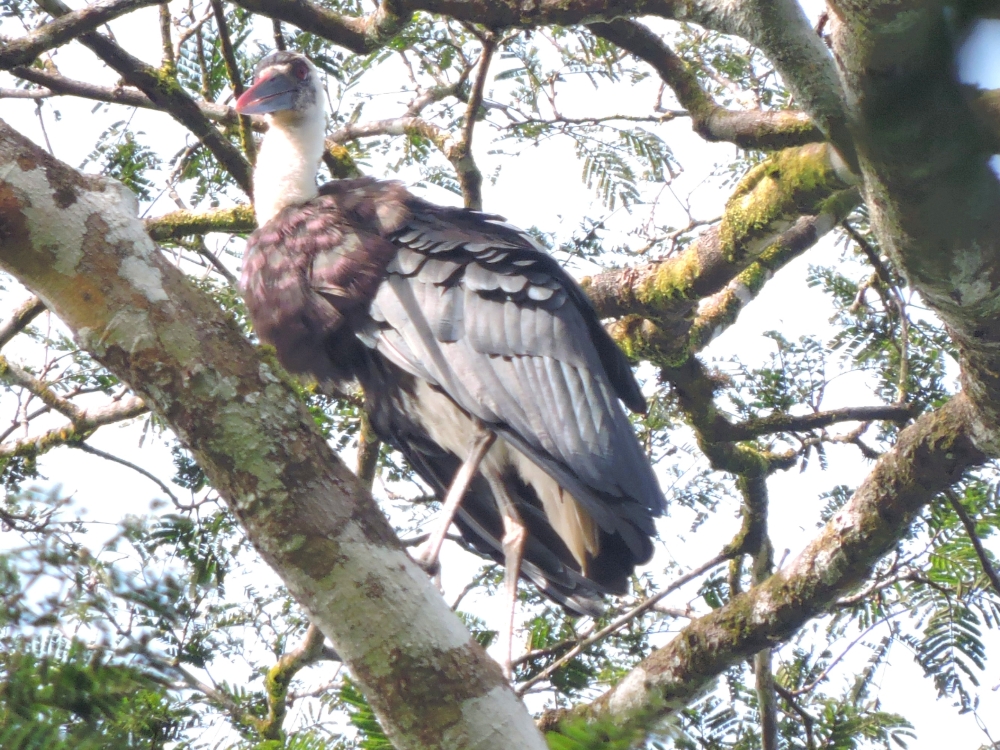
This beautiful West African Wattle-Eye pair (Tiwai) were hard at work on their nest.
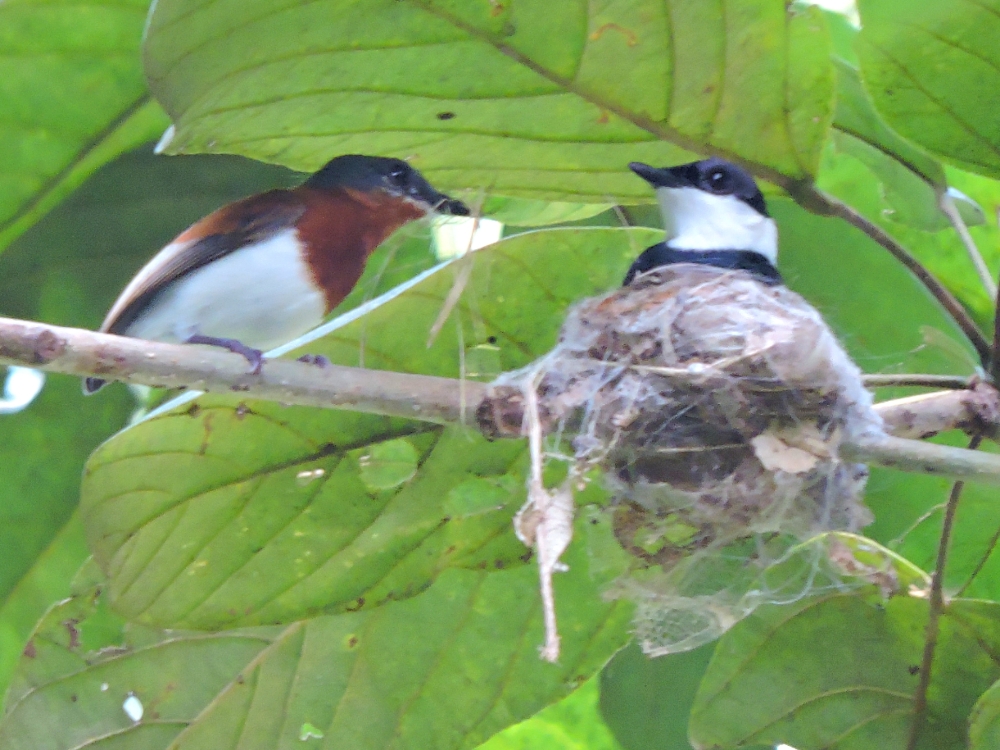
One of my favorite families contains the Bee-Eaters and West Africa, with several species, is one of the best places to see them. However, after several weeks without any sightings, I was beginning to wonder if I was about to come up empty. Seeing White-Throated Bee-Eater provided me a much needed burst of energy on an afternoon when I had been dragging.
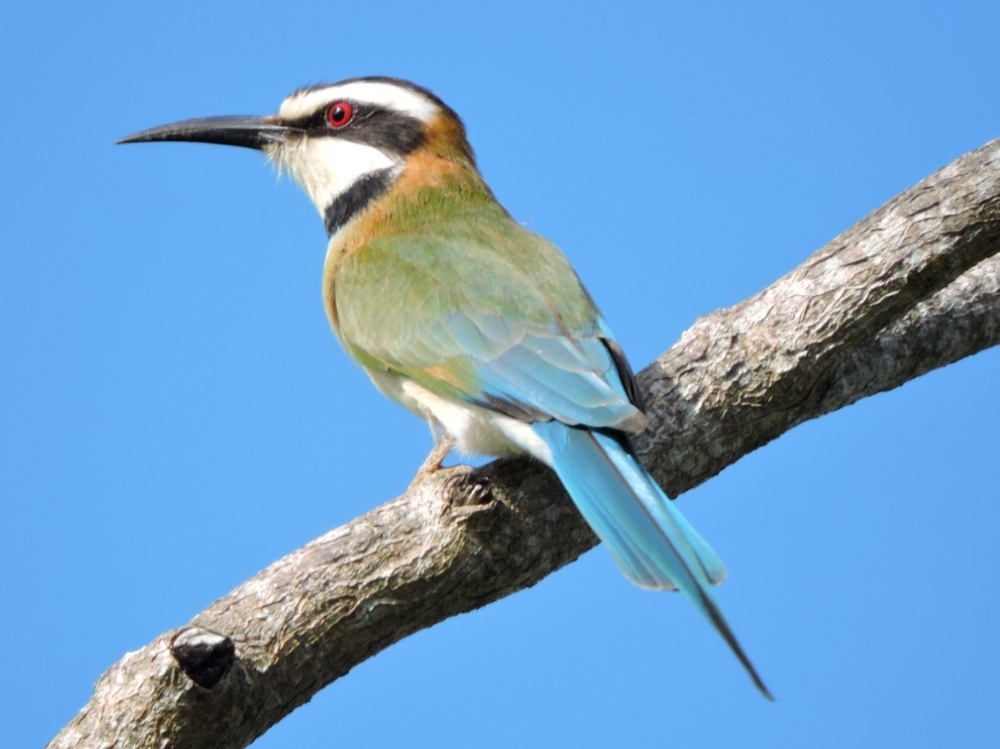
But another species from that family, Black Bee-Eater, was one of my most desired target species. This bird teased at first, flying right across my path before disappearing in the trees, but, just as I was about to give up, it graciously flew out and posed right above where I was standing. I mean, wow, just look at it!
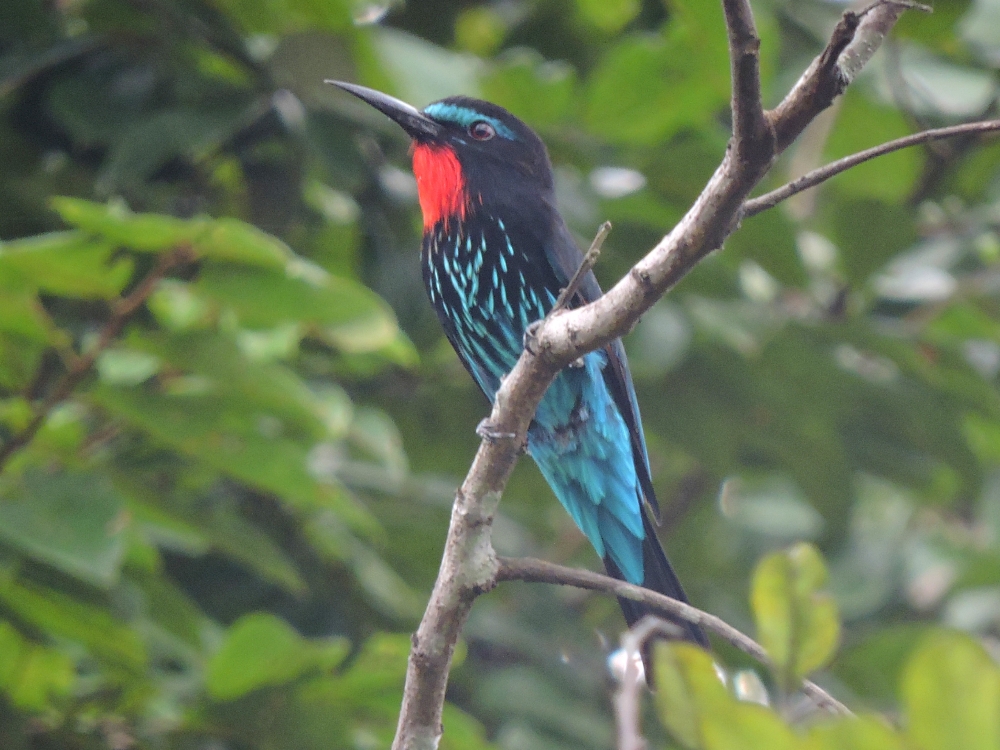
However, when birders visit West Africa, there is one bird most of them want to see more than any other. I was no different, and that bird was the main reason I wouldn’t let my failure to enter Ghana, where in recent years they have been reliably seen, pass without finding an alternative. This bird, one of two species in their own family, has obtained near-mythical status, both for its uncommonness and its rather incredible appearance. Though it is not widespread, and becoming increasingly rare, if you know where and when to look they are not particularly difficult to see. And you definitely want to see them, for there are no comparable birds to be found anywhere. Their black and white plumage does not appear to be composed of feathers, though of course it is, and to me it looks more like a smooth leather, or perhaps some kind of plush fabric. On the head, large patches of bare skin are black and bright gold. In my opinion, they look like something out of a Japanese cartoon from the 1970s. To see them usually requires one to wait patiently by their nests, cup-shaped mud constructions always placed on an exposed, but sheltered, rockface, until they return each evening, just before dusk, to roost for the night.
This sounds simple, but knowing where the nesting colonies are is a critical piece of information, and no individual birder could ever find one unaided. There is a known colony that is fairly easily accessible in the Western Area park, and it seemed like a good idea to me to get this important observation out of the way early in my visit, so I wouldn’t need to worry about it later. Momoh and I planned, therefore, to check out the colony early in the day, and return in the evening when the birds returned. We found one nest that appeared to be active, but at the appointed time, no birds chose to appear. Definitely a setback, but at least I still had at least one more opportunity.
That would be at the Gola Forest, where more significant colonies are located. In fact, the bird in question is part of the emblem of that National Park. Getting there was much more taxing, however, involving a horribly bumpy, two-hour drive in one of the park vehicles (I might have gotten there more quickly by cycling,) and then a four-kilometer forest walk along a trail that was generally good, up until the final tens of meters to the colony. I saw no other new birds at all during that walk, but I didn’t mind, because I was only focused on the prime target. We arrived at the cliff we were heading for at the perfect time, some of the birds had already arrived, but had not yet fully settled in to their nests. This time there were four active nests on the rockface and I was told that there were three more located on the other side of the outcropping, so up to fourteen birds were possible in that area. There were not that many there at the time, probably only four to six, but that was more than enough for me.
Initial sightings were anxiously fleeting as the birds dropped back into the undergrowth, and I was worried that this might be the best I would get. Happily, a few soon moved back closer to the base of their cliff and gave me some reasonable views at ten to twenty meters in distance. It was White-Necked Picathartes! I knew that photographing this special species was sure to be a challenge. My camera has severe difficulties focusing in dim light and the birds insisted on frequently having part of their bodies blocked by a leaf or twig. These two images were the best I managed, not especially artistic, but they do give a reasonable impression of one of these amazing birds.
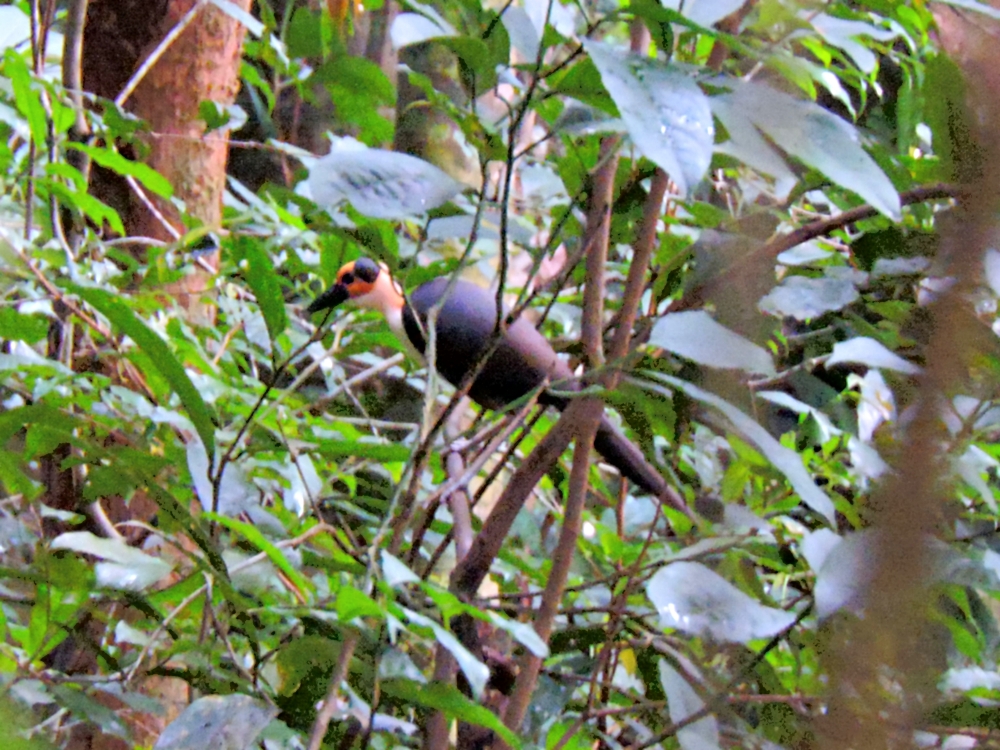
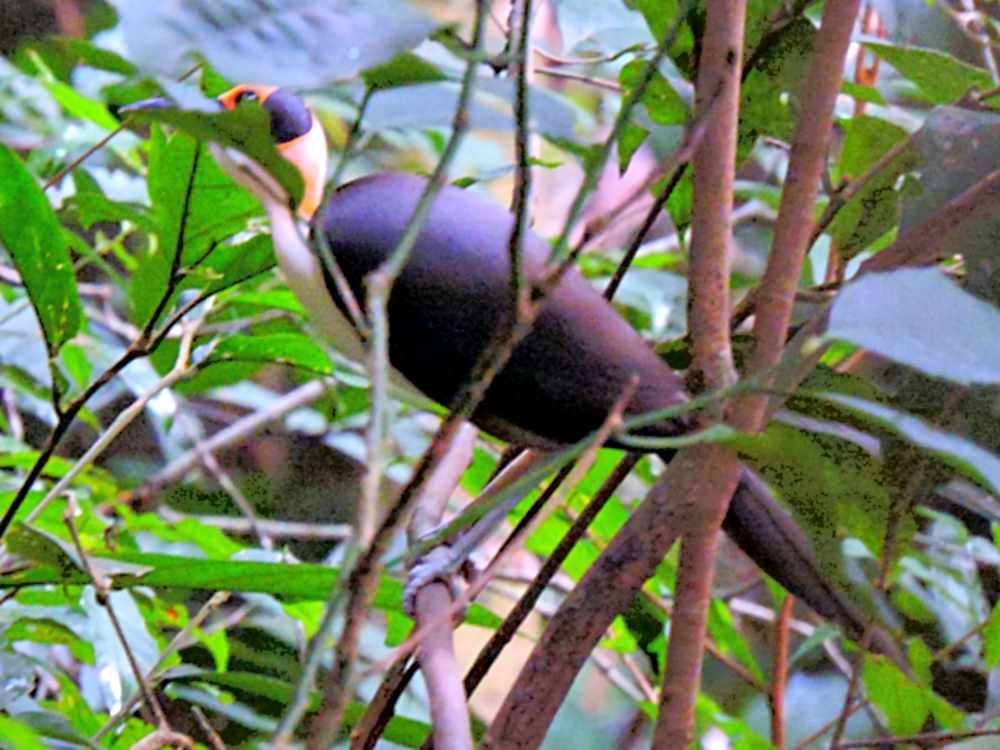
Apparently, there is another, even larger, colony in Gola, and probably others as well, but access to that site is much more time consuming. This does indicate that, in this park, at least, the Picathartes are doing well. Overall, however, habitat loss has lead to a highly fragmented population, and that problem continues to increase as time passes, so the future survival of this incredible species is still uncertain.
I definitely also had a goal of a higher species count for my visit to this country. The remaining sightings I made in Sierra Leone, either unphotographed, or poorly so were: Fanti Sawwing, African Harrier-Hawk, Wahlberg’s Eagle, West African Seedeater, Mouse-Brown Sunbird, Gray-Headed Negrita, Lemon-Bellied Crombec, Swamp Flycatcher, Western Nicator, Fraser’s Forest Flycatcher, Square-Tailed Sawwing, Yellow-Whiskered Greenbull, Simple Leaflove, Palm-Nut Vulture, Snowy-Crowned Robin-Chat, Red-Collared Widowbird, Shining Drongo, Tambourine Dove, Chestnut-Breasted Nigrita, Maxwell’s Black Weaver, Green Hylia, Blue-Throated Brown Sunbird, Little Green Woodpecker, Red-Tailed Greenbul, White-Crested Hornbill, Timneh Parrot, Brown Illadopsis, Shining Blue Kingfisher, Cassin’s Flycatcher, Blue-Spotted Wood Dove, Tawny Eagle, Johanna’s Sunbird, Red-Vented Malimbe, Red-Winged Prinia, Jambandu Indigobird, Afep Pigeon, Vinaceous Dove, and Blue-Bellied Roller.
It is noteworthy that by the time I had left Tiwai Island I had already tallied one hundred species during the African section of the Tour, over a period of seven and a half weeks. In Europe it took me six months and three weeks to achieve the same number. This has been a pace that I am more satisfied with, and I am not quite finished yet.